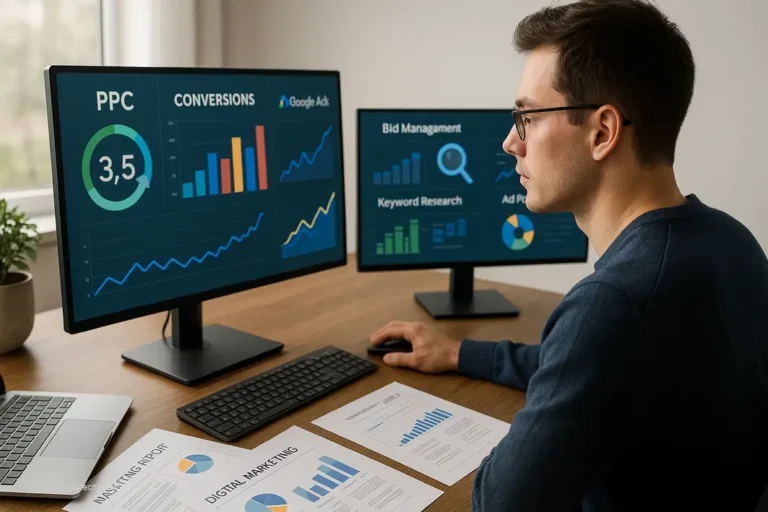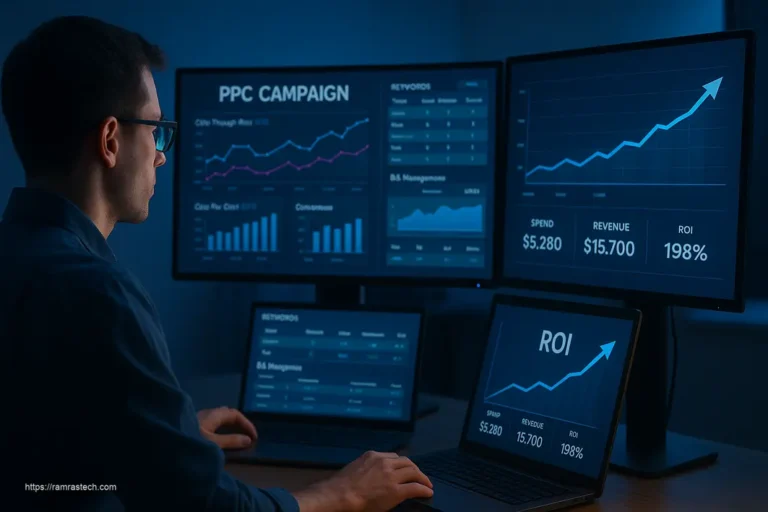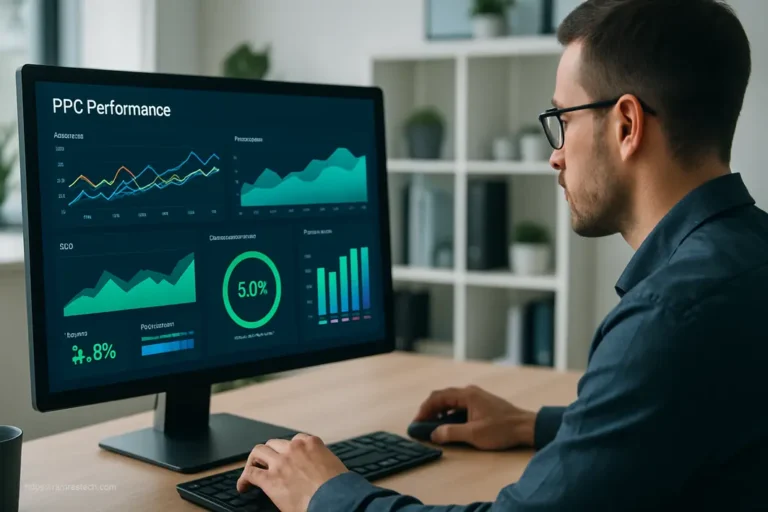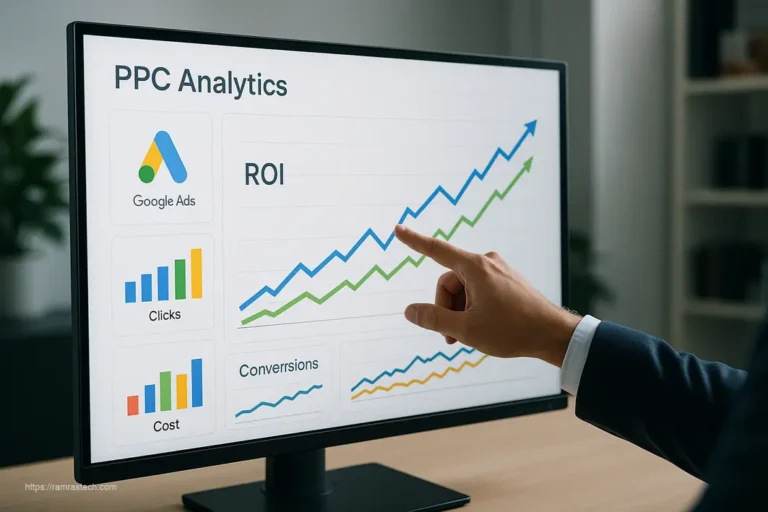How to Achieve Maximum ROI with PPC Advertising

Ever wondered how some businesses seem to get incredible results from their online ads while others struggle to break even? The secret often lies in their approach to PPC advertising. Pay-Per-Click marketing isn’t just about bidding on keywords and hoping for the best—it’s about creating strategic campaigns that deliver genuine returns on your investment.
In today’s competitive digital landscape, simply running PPC ads isn’t enough. You need to optimize every aspect of your campaigns to ensure each click brings you closer to a conversion rather than just draining your marketing budget.
What is PPC Advertising and Why Does it Matter?
PPC advertising is a digital marketing model where you pay a fee each time someone clicks on your online advertisement. Unlike traditional advertising where you pay for exposure regardless of results, PPC lets you pay specifically for user interest—those valuable clicks that bring potential customers to your doorstep.
The beauty of PPC lies in its precision. You’re not broadcasting your message to everyone; you’re targeting people actively searching for what you offer. This makes it one of the most efficient marketing channels available when managed properly.
The most popular PPC platforms include:
- Google Ads: The giant of PPC advertising, allowing you to place ads on Google’s search results pages and their extensive display network
- Bing Ads: Microsoft’s alternative that reaches the Bing, Yahoo, and AOL search networks
- Social media platforms: Facebook, Instagram, LinkedIn, Twitter, and TikTok all offer robust PPC options with unique targeting capabilities
- Amazon Advertising: Essential for e-commerce businesses selling on the platform
While Google Ads dominates the market (handling over 3.5 billion searches daily), each platform offers distinct advantages depending on your audience and business goals.
Why ROI Should Be Your North Star in PPC Campaigns
Return on Investment (ROI) measures the profitability of your PPC efforts by comparing the revenue generated against your advertising spend. It’s the ultimate metric that answers the question: “Is my PPC campaign actually making money?”
Many advertisers make the critical mistake of focusing exclusively on metrics like click-through rates or impression share. While these are important indicators, they don’t tell the complete story about campaign effectiveness. You could have a high CTR but if those clicks aren’t converting into customers, you’re essentially paying for traffic that doesn’t benefit your bottom line.
Calculating PPC ROI is straightforward:
ROI = (Revenue from PPC – Cost of PPC) / Cost of PPC × 100%
For example, if you spend $1,000 on a campaign that generates $3,500 in revenue, your ROI would be:
ROI = ($3,500 – $1,000) / $1,000 × 100% = 250%
A positive ROI indicates your campaign is profitable, while a negative one means you’re losing money.
Building a Foundation for High-ROI PPC Advertising
Comprehensive Keyword Research: The Cornerstone of PPC Success
Effective keyword research is like mining for digital gold. The keywords you choose determine who sees your ads, how much you’ll pay, and ultimately, your campaign’s success rate.
Start by brainstorming terms your potential customers might use when looking for your products or services. Then, expand this list using keyword research tools like:
- Google Keyword Planner
- SEMrush
- Ahrefs
- Ubersuggest
- WordStream
When evaluating keywords, pay attention to these key metrics:
- Search volume: How many people search for this term monthly
- Competition level: How many other advertisers are bidding on this keyword
- Cost-per-click (CPC): The average amount you’ll pay for each click
- Commercial intent: Whether searchers are looking to buy or just gathering information
The highest ROI typically comes from long-tail keywords—specific phrases containing three or more words. They generally have lower competition and cost less per click while attracting more qualified leads.
For example, “shoes” is a broad keyword with high competition, whereas “women’s waterproof hiking shoes size 8” targets someone much closer to making a purchase decision.
Crafting Compelling Ad Copy That Converts
Even the perfect keyword targeting falls flat without engaging ad copy. Your ad text must accomplish several critical objectives in just a few lines:
- Grab attention in a crowded digital space
- Clearly communicate your value proposition
- Include relevant keywords to improve quality score
- Feature a compelling call-to-action
- Set accurate expectations about what users will find after clicking
Here’s a template for effective ad copy structure:
- Headline 1: Include your primary keyword and main benefit
- Headline 2: Highlight a unique selling proposition or secondary benefit
- Headline 3: Add urgency or address potential objections
- Description lines: Elaborate on benefits, include features, and end with a clear call-to-action
- URL path: Use keyword-rich display paths that reinforce relevance
For example, a poor ad might say: “Buy Running Shoes – Many Options Available – Shop Now”
A better version would be: “Professional Running Shoes | 30% Lighter & Extra Support | Free Shipping + 60-Day Returns | Shop Our New Collection”
Strategic Audience Targeting: Finding Your Ideal Customers
One of PPC’s greatest strengths is precision targeting. Rather than showing your ads to everyone, you can display them specifically to users most likely to convert.
Google Ads and most platforms offer these targeting options:
- Demographic targeting: Age, gender, income level, parental status
- Geographic targeting: Countries, states, cities, or custom radius around locations
- Device targeting: Desktop, mobile, tablet
- Time targeting: Days of week and times of day
- Behavioral targeting: Previous interactions with your brand or similar products
- In-market audiences: People actively researching products in your category
The most effective approach often combines multiple targeting methods. For instance, you might target women aged 25-44 in major metropolitan areas who are in-market for fitness products and primarily use mobile devices.
Testing different audience segments allows you to discover which combinations deliver the highest ROI and then allocate more budget accordingly.
Advanced Tactics to Maximize Your PPC ROI
Implementing Negative Keywords to Eliminate Wasted Spend
Negative keywords might be the most underutilized tool in PPC advertising. These are terms you specifically exclude from triggering your ads, preventing your campaigns from showing to irrelevant searches.
For example, if you sell premium business software, you might add negative keywords like:
- “free”
- “crack”
- “download”
- “student version”
This ensures you’re not paying for clicks from users looking for free alternatives who are unlikely to purchase your product.
To identify negative keywords:
- Review your Search Terms report regularly
- Look for terms with high impressions/clicks but low conversions
- Analyze which search queries are bringing unqualified traffic
- Add these terms as negative keywords at the campaign or ad group level
Implementing a robust negative keyword strategy can immediately improve ROI by eliminating wasted spend and focusing your budget on searches with genuine purchase intent.
Optimizing Landing Pages for Conversion
Even the most perfectly targeted ad with an impressive click-through rate will fail if it leads to a poorly optimized landing page. Remember that you pay for every click regardless of whether that visitor converts.
Effective landing pages share these characteristics:
- Message match: The headline and content directly reflect the ad’s promise
- Clear value proposition: Immediately communicates benefits to the visitor
- Single, obvious call-to-action: Focuses visitor attention on the desired conversion
- Minimal distractions: Removes navigation menus and other exit paths
- Trust indicators: Testimonials, reviews, security badges, guarantees
- Mobile optimization: Seamless experience across all devices
- Fast load speed: Ideally under 3 seconds to prevent abandonment
A/B testing different landing page elements can dramatically improve conversion rates. Try experimenting with:
- Different headlines and copy approaches
- Various image or video content
- CTA button colors, text, and placement
- Form length and required fields
- Layout and design elements
Even small improvements in landing page conversion rates can significantly impact your overall PPC ROI.
Ad Extensions: Maximizing SERP Real Estate
Ad extensions expand your ads with additional information, increasing visibility and providing more reasons for users to choose your business. They’re essentially free add-ons that improve ad performance with no additional cost per click.
The most effective ad extensions include:
- Sitelink Extensions: Additional links to specific pages on your website
- Callout Extensions: Short, descriptive text highlighting special offers or unique selling points
- Structured Snippet Extensions: Lists of your products, services, or categories
- Call Extensions: Your phone number, enabling users to call directly from the ad
- Location Extensions: Your business address, ideal for driving foot traffic
- Price Extensions: Display prices for your products or services
- Lead Form Extensions: Allow users to submit contact information directly from the ad
Using multiple extensions not only provides more information but also increases your ad’s size on the search results page. This larger visual footprint typically leads to higher click-through rates and improved quality scores, which can lower your cost per click over time.
Budget Management Strategies for PPC Campaigns
Setting Realistic Budgets Based on Business Goals
Your PPC budget shouldn’t be an arbitrary figure but a strategic decision based on business objectives and potential returns. Start by answering these key questions:
- What’s your customer lifetime value (LTV)?
- What’s an acceptable cost per acquisition (CPA)?
- What’s your target ROI percentage?
- What’s your sales conversion rate?
With these figures, you can work backward to determine appropriate campaign budgets. For example, if your average sale is $100 with a 20% profit margin, your maximum CPA to break even would be $20. Factoring in your website’s conversion rate (say 5%), you could afford up to $1 per click while maintaining profitability.
Different campaign types require different budget approaches:
- Brand campaigns typically have high conversion rates and low CPCs, justifying higher budget allocation
- Competitor campaigns often cost more per click with lower conversion rates but can capture market share
- Generic search campaigns vary widely in performance and should be closely monitored for ROI
- Remarketing campaigns generally deliver strong ROI and deserve consistent funding
Always set daily budget caps to control spend and prevent unexpected overages, especially when launching new campaigns with unproven performance.
Bid Strategies: Manual vs. Automated
Modern PPC platforms offer both manual and automated bidding options, each with distinct advantages:
Manual Bidding:
- Gives you complete control over bids at the keyword level
- Allows for quick adjustments based on performance
- Works well for low-volume campaigns where algorithms have limited data
- Requires more hands-on management and expertise
Automated Bidding:
- Leverages machine learning to optimize bids in real-time
- Can adjust bids by device, location, audience, time of day, and more
- Requires less day-to-day management
- Performance improves as more conversion data accumulates
Popular automated bidding strategies include:
- Target CPA: Sets bids to achieve a specific cost per acquisition
- Target ROAS: Adjusts bids to maintain a target return on ad spend
- Maximize Conversions: Aims to generate the most conversions within your budget
- Enhanced CPC: A hybrid approach that adjusts your manual bids up or down
For most advertisers, the best approach is starting with manual bidding while gathering initial performance data, then transitioning to automated strategies once you have sufficient conversion history (typically 30+ conversions per month).
Scheduling and Dayparting for Maximum Effectiveness
Not all hours of the day or days of the week perform equally in PPC. Scheduling your ads to run only during high-performing periods can significantly improve ROI.
To implement effective ad scheduling:
- Analyze your campaign performance by day of week and hour of day
- Identify patterns in conversion rates and cost per conversion
- Increase bids during high-performing times
- Decrease bids or pause ads during consistently poor-performing periods
For example, a B2B software company might find weekday business hours deliver the best results, while a food delivery service might see peak performance during evening hours and weekends.
Some businesses also benefit from seasonal adjustments. Retail advertisers typically increase budgets during holiday shopping seasons, while tax preparation services might concentrate spend in Q1 leading up to tax deadlines.
Measuring and Analyzing PPC Performance
Essential KPIs for PPC Campaign Analysis
Tracking the right metrics is crucial for optimizing PPC performance. While there are dozens of available metrics, focus on these key performance indicators:
- Conversion Rate (CR): Percentage of clicks that result in a desired action
- Cost Per Conversion (CPC): Total spend divided by number of conversions
- Return on Ad Spend (ROAS): Revenue generated for every dollar spent on ads
- Quality Score: Google’s rating of your keywords and ads (higher scores lower costs)
- Click-Through Rate (CTR): Percentage of impressions that result in clicks
- Average Position: Where your ad typically appears in search results
- Impression Share: How often your ads appear compared to total available impressions
- Bounce Rate: Percentage of visitors who leave without taking any action
Establish baseline performance metrics and set improvement targets for each KPI. Regular monitoring allows you to identify trends and make data-driven optimizations.
Attribution Modeling: Understanding the Customer Journey
Most conversion paths involve multiple touchpoints across different channels before a purchase decision. Attribution modeling helps determine how much credit each touchpoint deserves for the eventual conversion.
Common attribution models include:
- Last Click: Gives 100% credit to the final touchpoint before conversion
- First Click: Assigns all credit to the initial touchpoint
- Linear: Distributes credit equally across all touchpoints
- Time Decay: Gives more credit to touchpoints closer to conversion
- Position-Based: Typically assigns 40% to first interaction, 40% to last, and 20% distributed among the middle touchpoints
- Data-Driven: Uses machine learning to distribute credit based on actual conversion patterns
Choosing the right attribution model depends on your sales cycle and business model. Longer sales cycles with multiple interactions typically benefit from more sophisticated models like position-based or data-driven attribution.
Proper attribution prevents undervaluing campaigns that initiate the customer journey (like broad match keywords or display ads) while providing a more accurate picture of each channel’s contribution to revenue.
Regular Auditing and Optimization Schedule
PPC campaigns require ongoing management to maintain and improve performance. Establish a regular optimization schedule:
Daily tasks:
- Monitor campaign spend and conversion trends
- Check for any sudden performance changes
- Adjust bids for high-priority keywords if needed
Weekly tasks:
- Review search term reports and add negative keywords
- Analyze ad performance and adjust budget allocation
- Pause underperforming ads and keywords
- Test new ad variations
Monthly tasks:
- Conduct deeper performance analysis across campaigns
- Review and refine audience targeting
- Assess landing page performance
- Add new keywords and expansion opportunities
Quarterly tasks:
- Perform comprehensive account audits
- Evaluate overall strategy and business alignment
- Review and update conversion tracking
- Reassess competitor positioning
Regular auditing prevents account drift and ensures your PPC strategy remains aligned with business objectives as market conditions evolve.
Common PPC Mistakes That Drain ROI (And How to Fix Them)
Overlooking Mobile Optimization
With mobile devices accounting for over 60% of searches, failing to optimize for mobile users can severely impact campaign performance. Common mobile-related mistakes include:
- Using desktop-oriented landing pages that load slowly on mobile
- Not adjusting bids for mobile device performance differences
- Neglecting to use mobile-specific ad formats and extensions
- Creating ads with too much text that appear cluttered on smaller screens
How to fix it: Implement a mobile-first approach by:
- Creating separate mobile-specific ad campaigns when performance differs significantly
- Using responsive landing pages that provide excellent mobile experiences
- Implementing call extensions and call-only ads for mobile users
- Setting mobile bid adjustments based on performance data
- Keeping ad copy concise and immediately visible without scrolling
Ignoring Search Intent Mismatches
Not all searches for the same keyword have the same intent. For example, someone searching “apple” could be looking for information about the fruit, the technology company, or something else entirely.
When your ads and landing pages don’t match the searcher’s intent, you pay for clicks that rarely convert.
How to fix it:
- Analyze search terms for intent patterns
- Group keywords by intent within separate ad groups
- Create intent-specific ad copy that addresses the searcher’s goals
- Develop landing pages that directly satisfy the implied question or need
- Use match types strategically to control when your ads appear
Neglecting to Track Phone Calls and Offline Conversions
Many businesses receive valuable leads through phone calls or convert customers offline, yet fail to incorporate this data into their PPC performance metrics. This creates an incomplete picture of true ROI.
How to fix it:
- Implement call tracking with unique phone numbers for different campaigns
- Set up call conversions in Google Ads to track calls from ads directly
- Use Google’s offline conversion tracking to import sales data from your CRM
- Consider the entire customer journey when evaluating campaign performance
- Assign appropriate value to phone calls based on typical conversion rates and value
Future-Proofing Your PPC Strategy
Adapting to Privacy Changes and Cookie Restrictions
The digital advertising landscape is undergoing significant transformation due to privacy regulations and the phasing out of third-party cookies. These changes impact tracking, targeting, and measurement capabilities.
To prepare for this cookieless future:
- Build first-party data collection systems through email subscriptions, account creation, and loyalty programs
- Implement enhanced conversions and server-side tagging where possible
- Explore privacy-friendly targeting alternatives like contextual advertising
- Test Google’s Privacy Sandbox technologies as they become available
- Focus on creating compelling offers that encourage users to share information willingly
Leveraging Automation and Machine Learning
PPC platforms are increasingly powered by machine learning algorithms that can optimize campaigns more effectively than manual management in many cases.
To leverage automation effectively:
- Feed the algorithms quality data by setting up proper conversion tracking
- Use broad match keywords with smart bidding to discover new converting search terms
- Test Performance Max campaigns that optimize across multiple Google networks
- Implement responsive search ads that automatically adjust to perform best
- Provide clear guidance through conversion goals and value settings
Despite increasing automation, human oversight remains essential for strategic direction, creative input, and ensuring business alignment.
Integrating PPC with Your Broader Marketing Strategy
PPC performs best when integrated with other marketing channels rather than operating in isolation. Consider how your PPC efforts complement and enhance:
- SEO: Use PPC data to identify high-converting keywords worth targeting organically
- Content Marketing: Promote valuable content through PPC to accelerate audience building
- Email Marketing: Capture leads through PPC and nurture them via email sequences
- Social Media: Reinforce messaging across platforms for better brand recognition
- Offline Marketing: Coordinate timing of PPC campaigns with traditional media efforts
Sharing data and insights between channels creates synergies that improve overall marketing effectiveness and ROI.
Frequently Asked Questions About PPC Advertising
What’s a good ROI for PPC advertising?
A good ROI for PPC advertising varies by industry, but most successful campaigns achieve at least a 200% return (or 2:1 ratio). This means for every $1 spent on advertising, you generate $3 in revenue ($2 in profit plus your original $1). However, some industries with higher profit margins, like legal or healthcare, might consider 3:1 or 4:1 as their minimum acceptable ROI. Ultimately, your target ROI should account for your specific profit margins, customer lifetime value, and business goals.
How long does it take for a PPC campaign to show results?
You’ll typically see initial performance data within 24-48 hours of launching a campaign. However, meaningful results that can guide optimization decisions usually require 2-4 weeks of data collection. For full campaign maturity with statistically significant data, expect to wait 3-6 months, especially for campaigns with modest budgets or targeting competitive keywords. This timeline extends for seasonal businesses or those with longer sales cycles.
Is PPC advertising worth it for small businesses?
Yes, PPC advertising can be extremely valuable for small businesses when implemented strategically. It offers several unique advantages: immediate visibility, precise targeting, scalability, and measurable results. Unlike SEO which takes months to show results, PPC can drive qualified traffic on day one. The key for small businesses is starting with a focused approach—target your most profitable products/services, use highly specific keywords, set conservative budgets, and continuously optimize for ROI rather than vanity metrics like impressions or clicks.
How much should I budget for PPC advertising?
Your PPC budget should be determined by your business goals, industry, competition, and sales margins rather than following a generic recommendation. However, as a starting point, new advertisers should consider a minimum test budget of $1,000-$2,000 per month for at least three months to gather meaningful data. This typically allows for 200-500 clicks depending on your industry and keywords, which should generate enough conversions to evaluate performance. Once you’ve established profitable campaigns, you can scale up based on performance data and ROI calculations.
What’s the difference between SEO and PPC advertising?
SEO (Search Engine Optimization) and PPC (Pay-Per-Click) are complementary strategies for gaining search visibility, but they differ in several key ways:
- Cost structure: SEO requires ongoing investment in content and technical optimization but doesn’t incur per-click costs; PPC incurs a cost for each click received
- Timeline: SEO typically takes 3-6 months to show significant results; PPC can drive traffic immediately after campaign launch
- Positioning: SEO targets organic search results; PPC appears in designated ad positions
- Predictability: PPC offers more predictable and controllable results; SEO is subject to algorithm changes
- Targeting options: PPC provides more precise targeting controls; SEO targets broader keyword themes
Most successful digital marketing strategies utilize both channels: PPC for immediate results and specific promotions, and SEO for sustainable long-term traffic.
Conclusion: Taking Your PPC Advertising to the Next Level
Maximizing ROI from PPC advertising isn’t a one-time task but an ongoing process of testing, analyzing, and refining. The most successful advertisers continuously evolve their strategies based on performance data while staying aligned with overall business objectives.
By implementing the tactics outlined in this guide—from foundation-building keyword research to advanced optimization techniques—you’ll be well-positioned to achieve exceptional returns from your PPC investments. Remember that even small improvements in click-through rates, conversion rates, or cost-per-click can compound to deliver significant ROI improvements.
The landscape of PPC advertising continues to evolve with new technologies, platform features, and privacy considerations. Staying informed about these changes and adapting your approach accordingly will ensure your campaigns remain effective and competitive.
Whether you’re managing PPC in-house or working with an agency, maintaining a focus on ROI rather than vanity metrics will help you make better decisions about budget allocation and campaign strategy.
Ready to transform your PPC performance? Start by auditing your existing campaigns using the principles discussed, identify your biggest opportunities for improvement, and implement changes methodically while measuring their impact. With persistent optimization and strategic thinking, your PPC advertising can become one of your most powerful and profitable marketing channels.
Check out our guide on Affordable Digital Marketing strategies to complement your PPC efforts with other cost-effective marketing channels.
